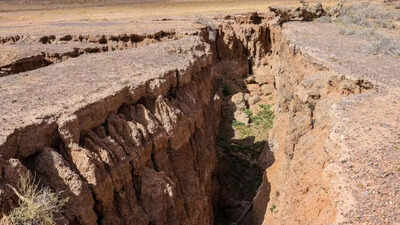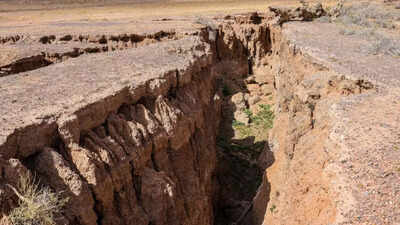In March 2025, central Myanmar was struck by a powerful 7.7 magnitude earthquake—the strongest to hit the region in over a century and one of the deadliest in its modern history. What sets this seismic event apart is the capture of the fault’s sudden rupture in real time by a nearby CCTV camera, marking the first-ever video evidence of such rapid ground movement during an earthquake. The footage vividly shows the Earth’s surface splitting and slipping sideways by an impressive 2.5 meters in just 1.3 seconds. This rare visual record provides scientists with an unprecedented opportunity to study the detailed mechanics of earthquake fault slips, advancing our understanding of seismic behaviour and potentially transforming how future earthquakes are analysed and predicted.
Myanmar earthquake and rare real-time footage of 2.5 metre fault
On March 28, 2025, the Sagaing Fault near Mandalay, Myanmar’s second-largest city, ruptured in a strike-slip earthquake where two blocks of earth slid past each other horizontally. This earthquake was both powerful and deadly, shaking the region unlike any event in recent memory. What makes this event groundbreaking is the CCTV footage that captured the fault slipping in real time, a phenomenon never before recorded on video. Unlike previous studies relying on distant seismic sensors, this footage offers a direct visual record of the fault movement.
Detailed analysis reveals pulse-like rupture and curved slip path
Researchers from Kyoto University analyzed the footage using a pixel cross-correlation technique, measuring the fault’s rapid 2.5-meter slip at speeds up to 3.2 meters per second. The slip lasted only 1.3 seconds, confirming a pulse-like rupture — a short, intense burst of movement traveling along the fault, similar to a ripple across a rug. The study also showed the fault slip path was subtly curved, challenging earlier ideas of purely linear fault ruptures and aligning with geological observations worldwide.
New frontiers in earthquake science and future research
This first-of-its-kind video observation offers powerful new tools for seismologists to understand fault behavior and earthquake mechanics. Capturing such detailed fault movement in real time will improve earthquake models and help better predict the ground shaking in future events, which is crucial for disaster preparedness. The research team plans to further explore the factors controlling fault slip shape and speed through physics-based simulations, hoping to unlock deeper insights into earthquake dynamics globally.






